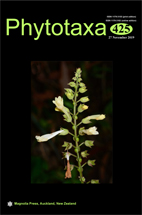Abstract
Based on a previous molecular phylogenetic analysis, Cryptantha, an herbaceous plant genus of the family Boraginaceae, subtribe Amsinckiinae, was split into five genera: Eremocarya, Greeneocharis, Johnstonella, Oreocarya, and a reduced Cryptantha, the last in two separate clades. As a result of this study, Johnstonella was expanded to 13 species and 15 minimum-rank taxa, these formerly classified in Cryptantha s.l. More recent analyses of this complex, with an increased sample size and high-throughput sequence data, indicate that four additional Cryptantha species not previously sampled—C. albida, C. mexicana, C. texana—plus what was originally identified as C. hispida nest within Johnstonella with strong support. However, the identity of C. hispida used in this analysis is now in doubt. The material used likely represents a new species, in the process of being investigated. Two additional species not sequenced to date—C. geohintonii and C. gypsites—are clearly close relatives of C. albida and C. mexicana, based on morphological similarity. In order to maintain monophyly of genera, we here make new combinations in transferring four of these species from Cryptantha to Johnstonella, with the new combinations Johnstonella albida, J. geohintonii, J. gypsites, and J. mexicana. We delay the transfer of Cryptantha texana to Johnstonella because of its morphological similarity to other species that clearly nest within Cryptantha s.s. These same molecular phylogenetic studies may also support the transfer of two previously recognized Johnstonella species—J. echinosepala and J. micromeres—to Cryptantha, one to each of two separate clades. Additional phylogenetic studies focusing on some of these taxa are needed to confirm the position of these latter three species and the possible recognition of a new genus in the complex.

